The Citron, also known as the Citrus Medica, is one of the oldest citrus in the world. I mean unsurprising, come on, just look at those wrinkles and weird bumps! Don’t judge a book by its cover though, the citron is magical. As the first citrus to arrive in Europe, the citrus medica even gave us the word citrus. Because of its age, this jumbo-lemon-looking citrus has been not only used in food and as an aromatic but it is also has tremendous symbolic importance in difference cultures.
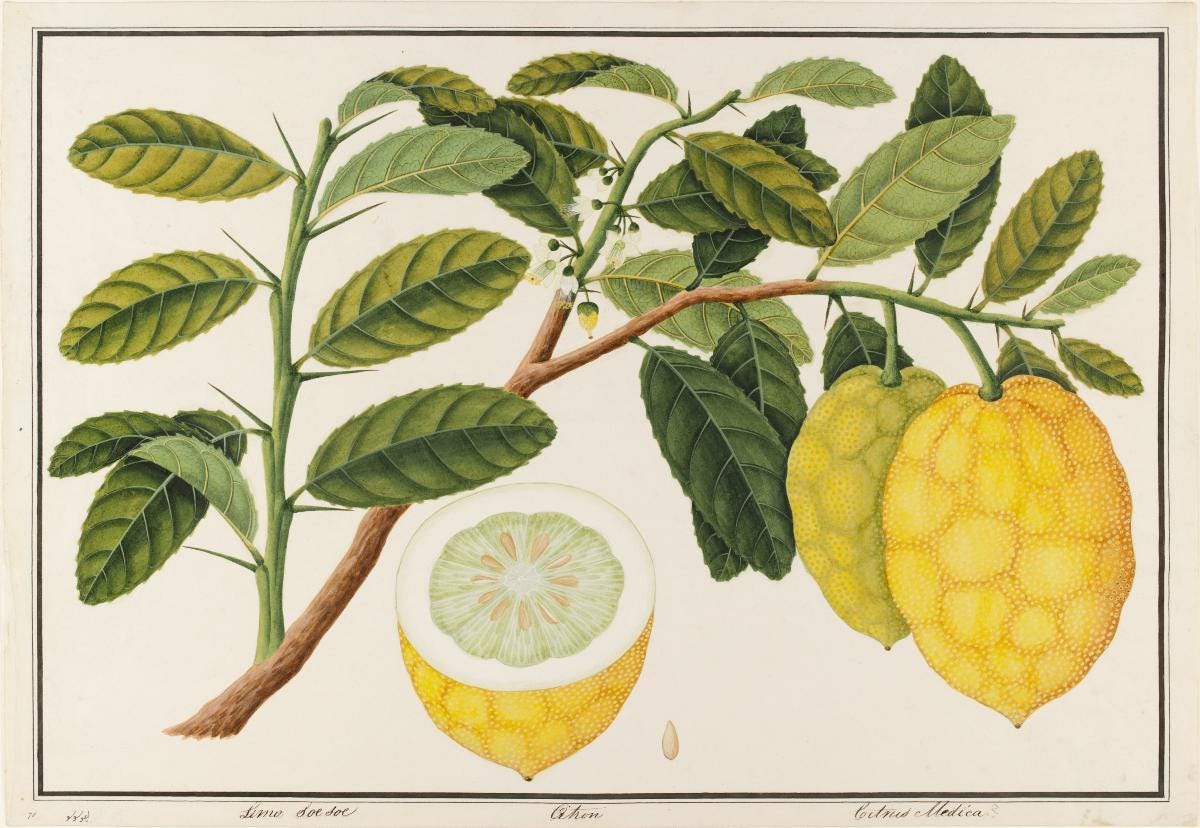
I first tried this citron a mere 2 weeks ago when in Valencia at the Todoli Foundation. You can find all of my videos about this trip here and my city guide here! There, I learned that the name Citrus Medica does not come medicine but rather from the town of Media, modern-day Iran, where it was introduced in the 4th century BCE. So while it does aid digestion, it was not named after its medicinal properties.
The citrus medica was originally a wild species grown in the foothills of the Himalayas. There is evidence of citron seeds in Ancient Mesopotamia dating from 4000BCE! While there is no exact record of how the citron made its way to the Mediterranean, one thing we know is that Alexander the Great’s army brought citrons with him to the area when traveling from India to Macedonia around 300BCE. Let’s just say, citrons have been around for a long time and while they’re originally from Northern India, they made their way across the globe rapidly due to their addictive taste and symbolic value.
Citrus Families
All citrus are descended from 3 - the citron + pomelo + mandarin. There are many infographics online, and while they all annoyingly slightly differ (sigh) one thing is for sure, the citron is 1 of the 3 mamas.

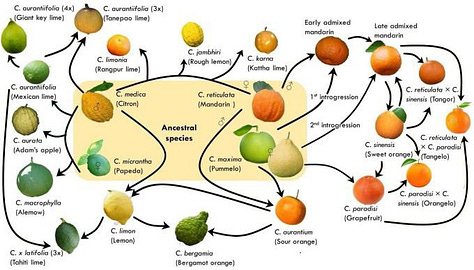

While the word citron means lemon in many languages, including my native French, it is not a lemon. Rather, a lemon is a mix between a citron and a sour orange. So while it’s a citron’s baby, it is not 100% a citron.
 Tiktok failed to load.
Tiktok failed to load.Enable 3rd party cookies or use another browser
What Does It Taste Like?
This scraggly-skinned, bumpy, odd shaped giant lemon-looking citrus has thick inner membrane and small amount of pulp. This inner thick white pith is also called an albedo! The segment walls between the pulp is also thick in comparison to other common citrus and very tough to chew on. The skin is incredibly oily that makes nice and aromatic.
I also found that each individual pulp pocket in each segment, you know the juicy teardrops looking thing that makes up the inside of a citrus, was really large and dry on the outside. On the inside however, it was bursting with juice and audibly popped when biting down on it. The flavor of the citron itself is extremely sour and acidic. As someone who eats lemons for fun, I love it.
In the citron family, you can also find the funky looking Buddha’s Hand! When at the Todoli foundation, I was surprised to find out that this citron contains no pulp whatsoever! It’s the only citrus in the world without any. Good thing the expression isn’t “when life gives you buddha’s hand…”. Bad joke, let’s move on.
Like the citron, It can be eaten candied, thinly sliced in salads and bakes, or grated for marinades and dressings. Otherwise, it’s an excellent room fragrance. With just one on your counter, you can impart that fresh herby smell throughout your space. I can attest, I’ve had a citron in my kitchen for a week and the aroma is not dissipating!
 Tiktok failed to load.
Tiktok failed to load.Enable 3rd party cookies or use another browser
Spiritual and Religious Symbolism
The citron was the the first citrus to arrive in the Mediterranean, making it an extremely valuable commodity. It wasn’t until much later in the the 10th century CE that the common sour orange, lime and pomelo reached the Mediterranean. Because of its early arrival and uniqueness compared to other fruit, the citron became a status symbol for the ancient Roman ruling elite. It was often displayed in homes and in works of art in the the Ancient world to show off social status.
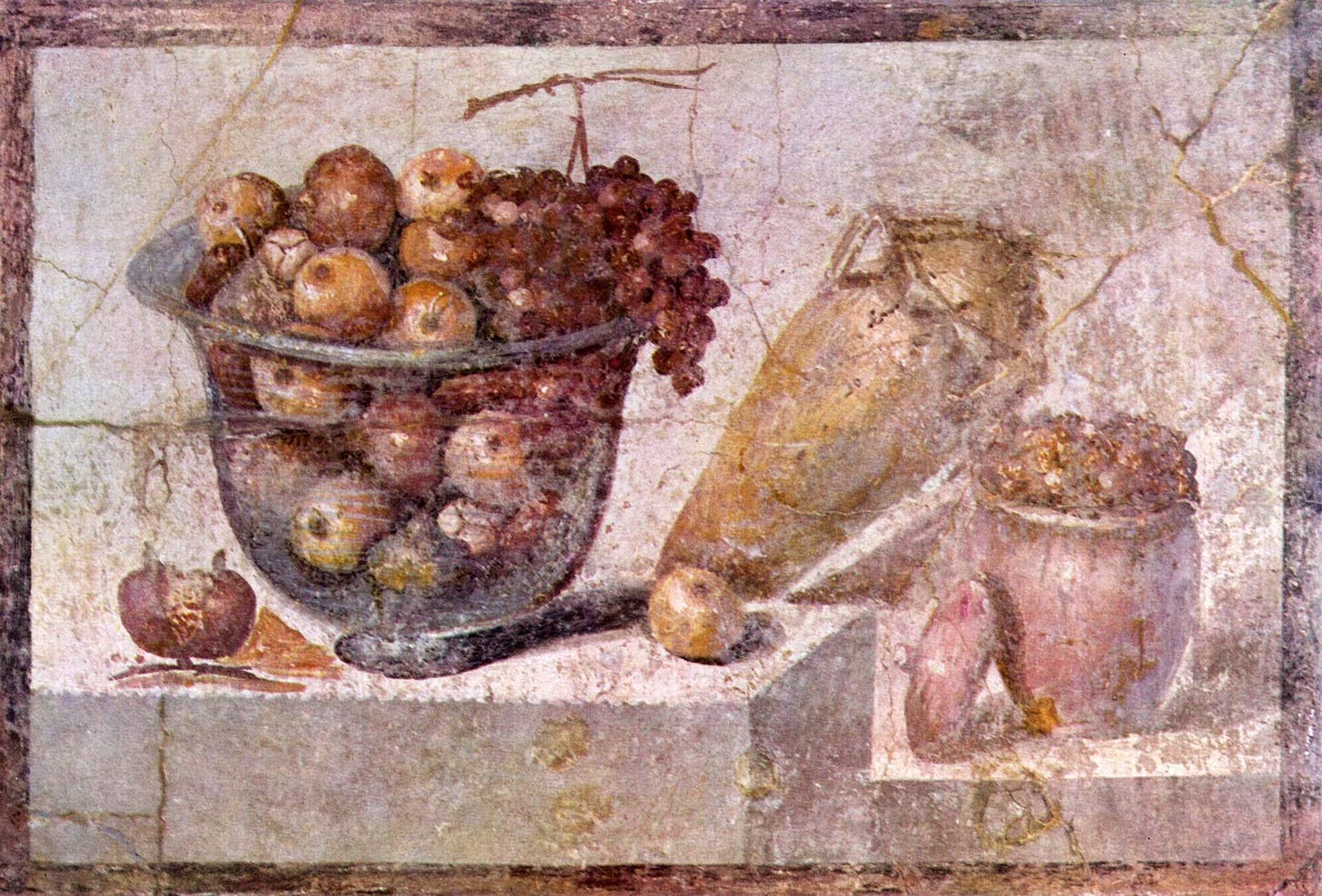
Called etrog in Hebrew, the citron is used in Jewish ritual purposes specifically during the week of Sukkot as one of the four species. Based on some research, I’ve come to learn that this citrus symbolizes the heart and the root of wisdom and understanding. It is so prized that traditionally it is wrapped in silk and placed in a silver box. After Sukkot, it can be eaten and with just one bite of the etrog, a woman can become pregnant and have an easy childbirth.
Originally from India, the Buddha’s Hand citron also holds immense symbolic importance. As the name suggests, it is a common offering in Buddhist temples. When this citron made its way from India to China, it continued to be seen as special and is now placed on Chinese altars and in homes to represent long life and happiness. In Japan, the fruit is served especially around the new year to bring about good prosperity and fortune.
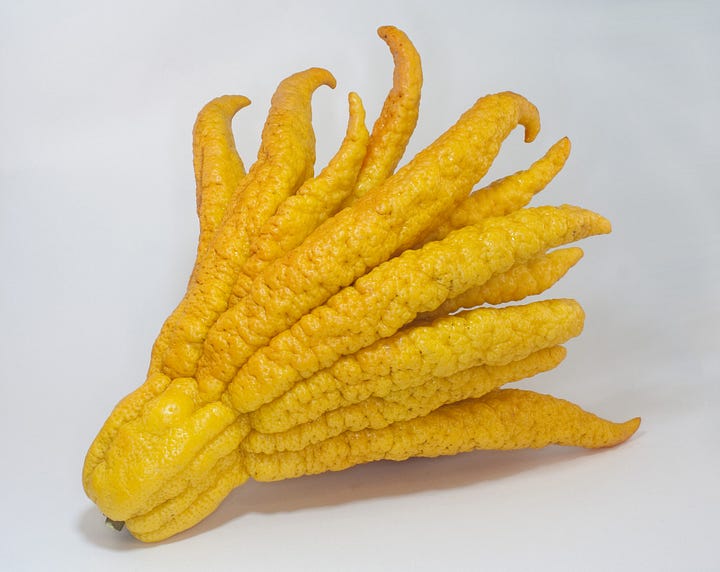

How It’s Commonly Eaten
Today, citron is grown primarily in Sicily as well as in some other sunny countries around the Mediterranean like Crete, Corsica, Morocco as well as in Puerto Rico. Because of this, the citron, cedro in Italian, is commonly used candied in recipes like panettone and often mistaken by foreigners for pieces of lemon. There is even an Italian soda called cedrata!

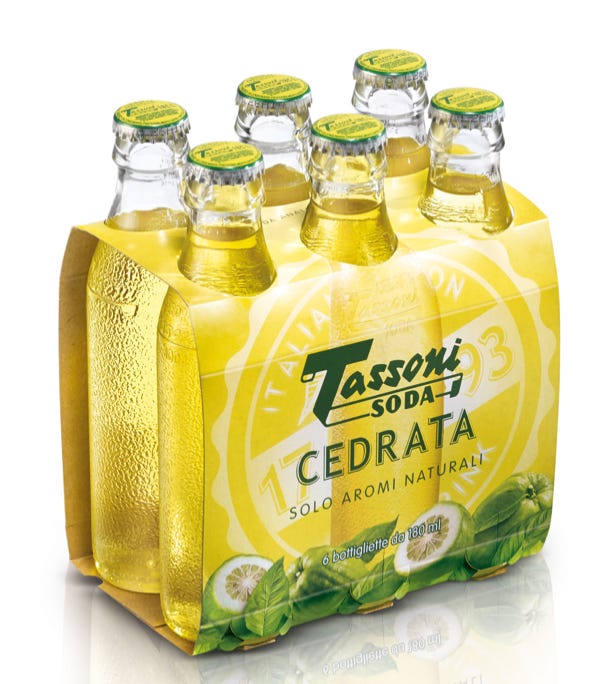
In Pakistan and Southern India, the citron is used to make pickles, jam, and preserves. Further, another video I made tasting the citron, I got many comments asking me to try Korean citron tea. After further research, I’ve realized that the citrus used in this marmalade to make tea is actually called yuja. Interestingly enough, yuja is the Korean word for yuzu! Although many believe that yuzu is a descendent of the citron, it’s actually an entirely separate citrus species. Yuzu is neither a lemon nor is it a citron.

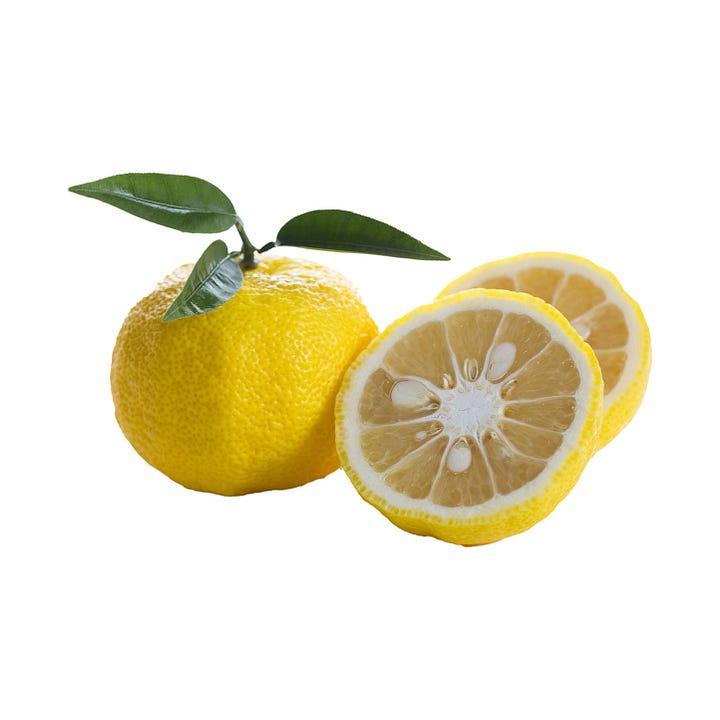
What should you do with a citron if you happen to get your hands on one? That’s entirely up to you! I personally ate half of mine (oops) raw because I still find eating the crunchy albedo a new fascinating experience… I candied the other half.
 Tiktok failed to load.
Tiktok failed to load.Enable 3rd party cookies or use another browser
You can find my recipe for foolproof candied citrus peel here!




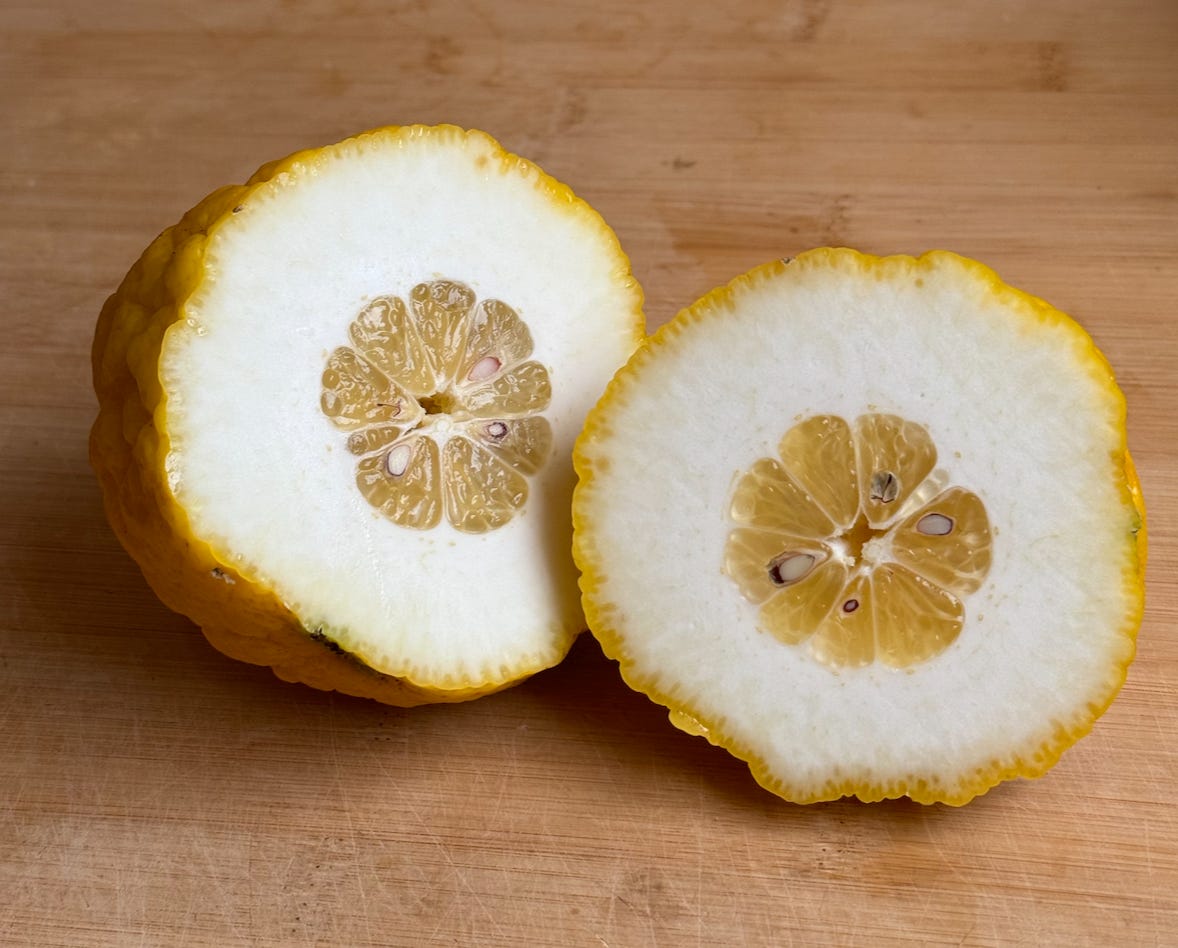




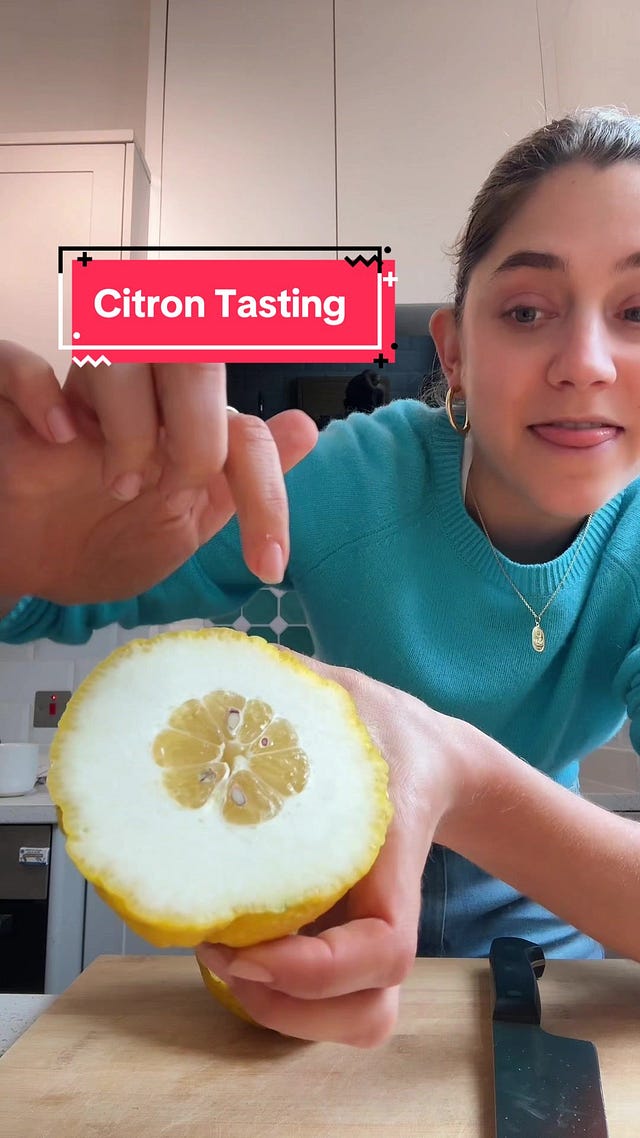



Loved this! So very interesting :)
Loved reading this! Can’t believe I’ve never heard of citron before 🍋